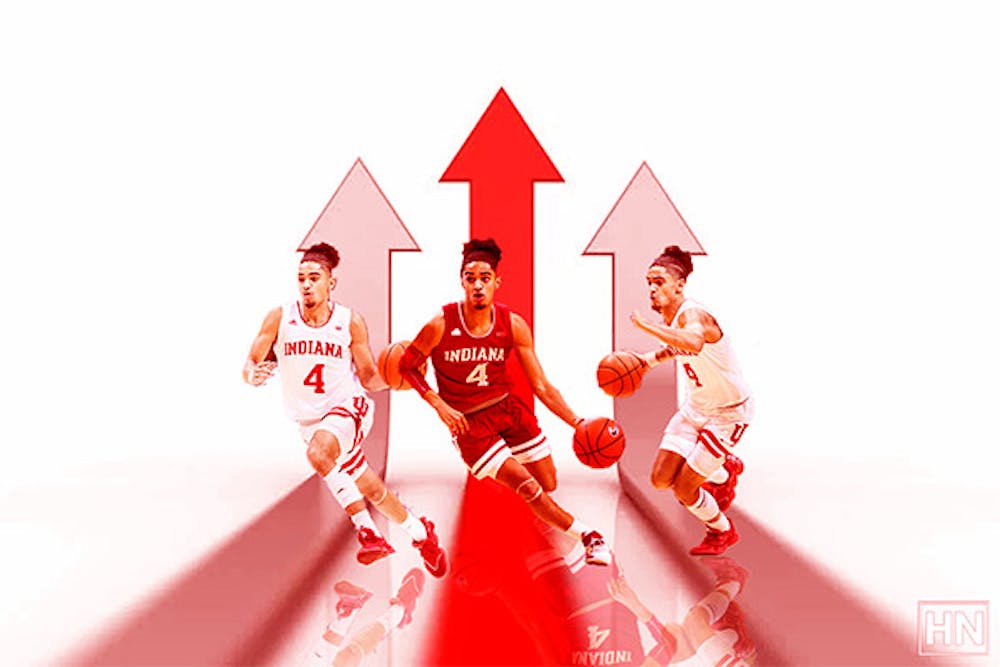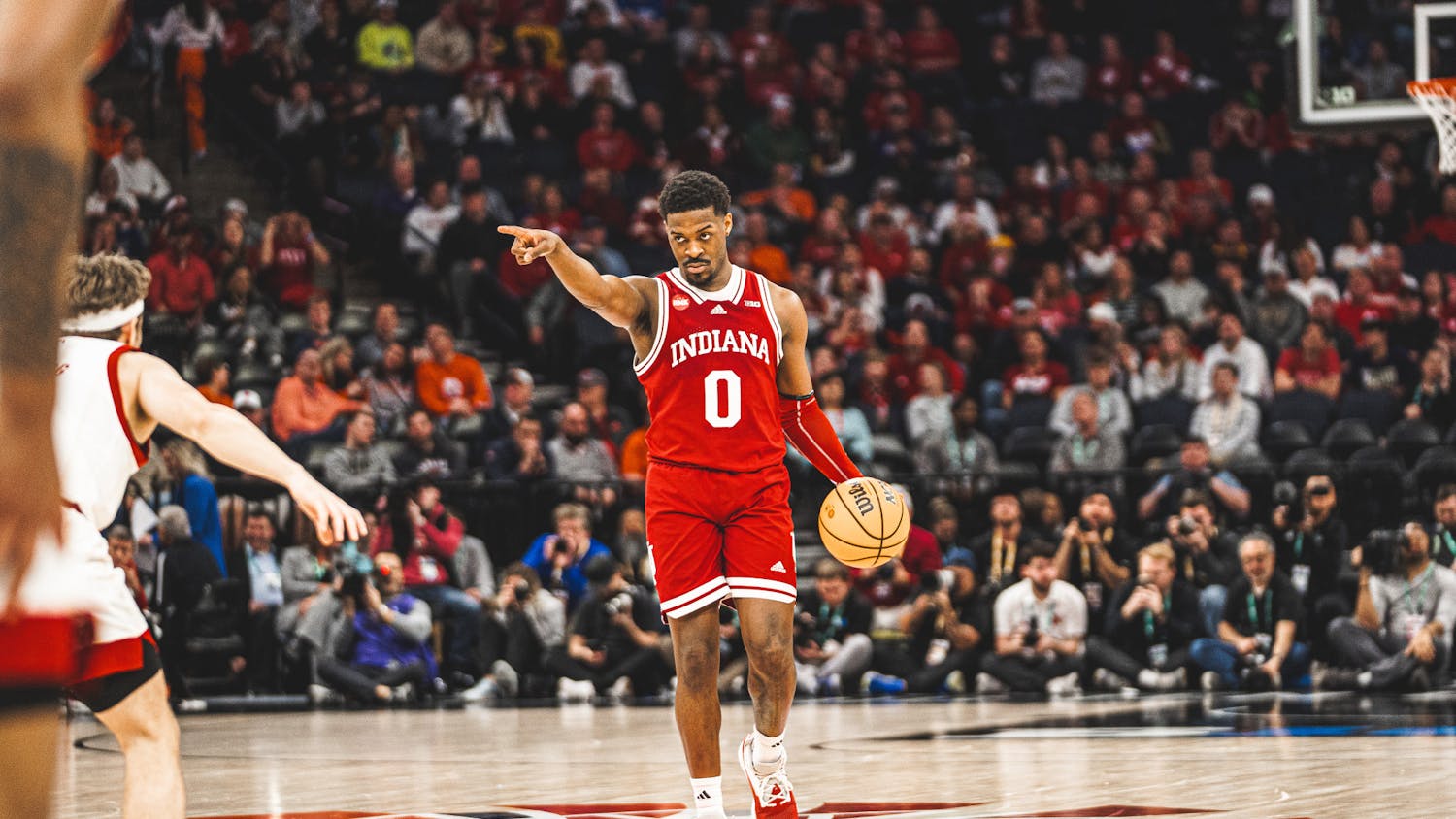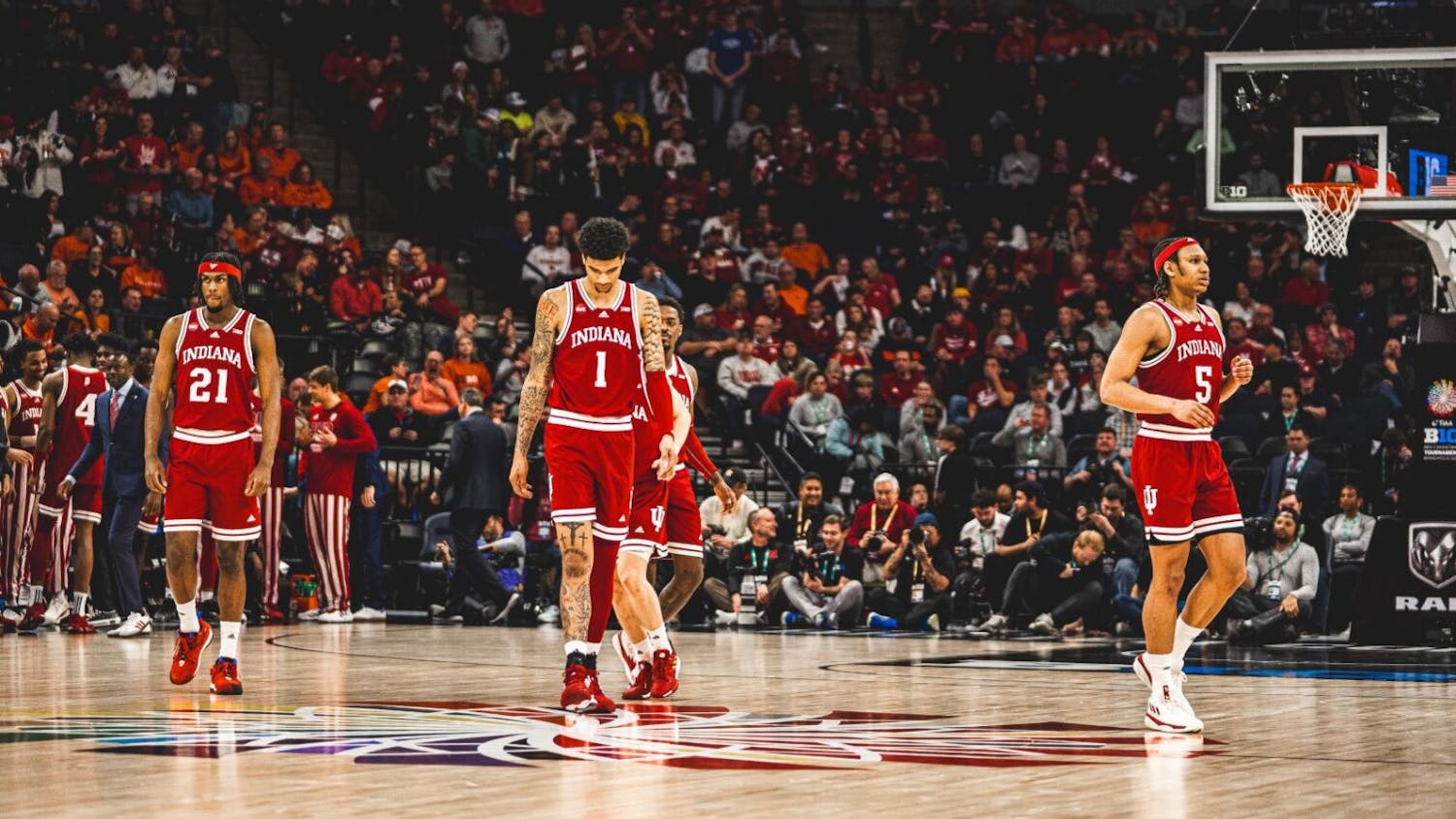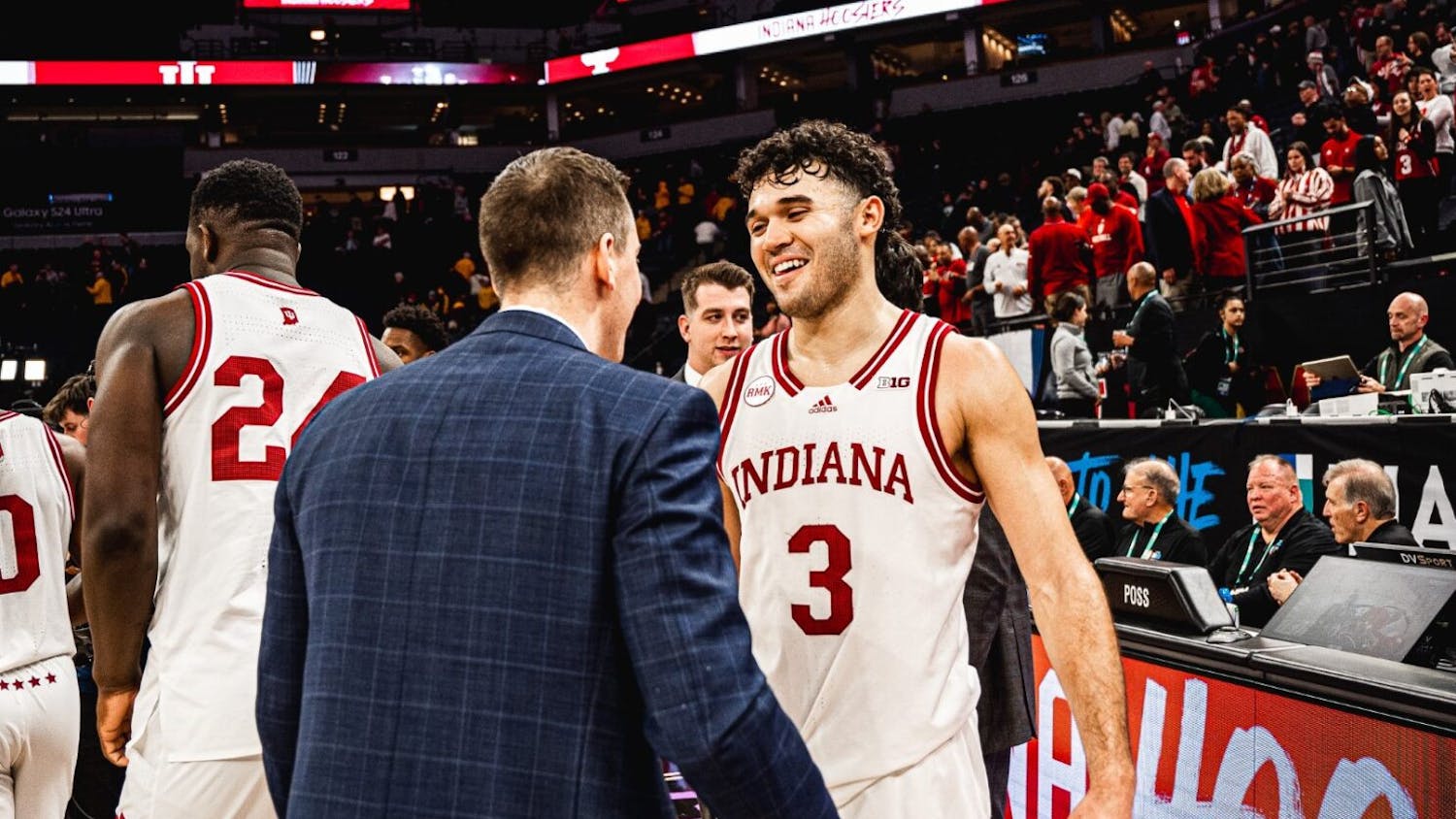With 5:11 remaining in the first half, Indiana trailed Michigan by eight. In a late-season game in which the Hoosiers needed a win to reclaim some ground in their fight to make the tournament, they simply could not keep pace with their opponent. However, a flash of what the future may hold gave any watching Hoosier fans a glimmer of hope.
After passing the ball to Trayce Jackson-Davis, he receives the ball right back at the top of the key. Pointing to the floor just past his left foot, he motions for Jackson-Davis to set a screen on his man, Mike Smith.
He takes one quick jab step to his left, appearing as if he is going to use the screen and drive to the basket. And then he’s gone.
By the time Mike Smith can recover, No. 4 is already past him en route to the basket. Michigan big man Hunter Dickinson moves over to help as Mike Smith catches up. It seems as though they have recovered from the blowby.
Dribbling into the oncoming defenders with his right hand, he bodies up, then in mid-air, switches to his left and lays it in, high off the glass.
Two for Khristian Lander.
After struggling game after game to body up against bigger and stronger Big Ten defenders, Lander finally was beginning to hold his own when he drove inside, a welcome sight for hopeful Hoosier fans.
Lander’s commitment to stay home
On Feb. 23, 2020, Indiana came away with a massive win against what was then the ninth-ranked team in the country, the Penn State Nittany Lions. If fans glanced in the first few rows of seats behind the scorer’s table, they would catch a glimpse of 2020 Indiana Mr. Basketball winner, Anthony Leal. Next to him stood a junior in high school, one of the top point guards in the class of 2021, Khristian Lander.
Just two days later, Lander would verbally commit to join the Hoosiers.
Immediately, widespread speculation pointed towards Lander potentially looking to reclassify. Sure enough, after completing his high school credits over the summer, he announced his intent to join the class of 2020, forgo his senior year in high school, and enter college a year early.

In recent years, the college basketball world has seen an uptick in reclassifications. Whether it be to start college early in order to make it to the NBA quicker or to help out the chosen college team by graduating high school early, reclassification has led to a wide variety of results. Some players experience success immediately in the NCAA, while others have a major adjustment period. Some live up to the hype of their pre-college days and enter the NBA after just one year of college, while others end up struggling due to a lack of maturity and size, and fail to ever make an impression on professional scouts after four years at the college level.
The season began with many fans wondering if Lander was heading down the latter path, but as the season now comes to a close, Lander has begun to show his success and growth. However, Hoosier Nation has still found itself wondering what Lander’s full potential really is, and whether or not he will live up to the hype that was created in high school.
While Lander is only wrapping up his first year, other players have had similar starts to their collegiate careers and ended up having great success both at this level and in the professional leagues.
After looking at other high-level players who also reclassified to enter college a year early, it becomes much easier to make a projection about Lander’s future and discuss possible outcomes for his collegiate career and beyond.
One-and-done players
Noah Vonleh
The first player, who will certainly be recognizable to IU fans, is Noah Vonleh. While not a point guard, Vonleh was a high five-star recruit who reclassified to enter college a year early. Vonleh had a stellar senior year of high school averaging 17 points, 12 rebounds, and four assists, earning McDonald’s All-American honors. Ranked the 11th player in the country, the 6-foot-9 power forward committed to Indiana. According to his recruiting profile, he checked in at 220 pounds.
Vonleh had little trouble finding success in college, averaging 11.3 points and nine rebounds per game and earning Big Ten Freshman of the Year as well as Third Team All-Big Ten honors.
Most notably, however, was his weight gain. Per his IU Athletics profile, his weight was up to 240 pounds.
After a stellar first season, Vonleh was drafted ninth overall by the Hornets in 2014. He did not experience the same success his first year in the NBA, averaging only 3.3 points and 3.4 rebounds in 10.4 minutes per game. One question that will continue to surface was whether or not Vonleh was mentally, and most importantly, physically ready to enter the NBA.
Jamal Murray
Another five-star player who entered college early was Jamal Murray. The shooting guard was rated the No. 10 player in the country and weighed 180 pounds. In his only year at Kentucky, Murray started in all 36 games, averaged 35.2 minutes, 20 points, 5.2 rebounds and 2.2 assists per game. Once again, his improved stature makes an impression, now marked at 207 pounds.
After hearing his name called by the Denver Nuggets at No. 7, Murray, now weighing 215 pounds, averaged 9.9 points, 2.6 rebounds and 2.1 assists per game through his first year in the professionals. Since his rookie year, Murray has continued to make an impact for his team, averaging 18 points in three of four seasons since his rookie year.
Since graduating high school, he has put on 35 pounds.
Nico Mannion
The last one-and-done player is Nico Mannion. Originally from Siena, Italy, five-star Nico Mannion averaged 30.4 points and 6.2 assists per game his senior year and was picked as the Arizona Gatorade Player of the Year as well as a McDonald’s All-American. Committing to Arizona, the point guard stood at 6-foot-3 and weighed 180 pounds.
In his single season at Arizona, after only gaining 10 pounds, Mannion saw his draft stock fall after averaging 14 points, 5.3 assists, and 2.6 turnovers per game.
Picked in the second round by the Golden State Warriors, Mannion has continued to struggle to find his rhythm in limited time.
Multi-year college players
Ryan Greer

The lowest-rated player on this list, but closest in measurables to Lander, is Ryan Greer. Ranked as a three-star combo guard coming out of high school, the 6-foot, 170-pound Greer committed to the Northwestern Wildcats and reclassified to join the team one year early.
With only about eight minutes per game in his first two seasons and relatively forgettable numbers, Greer has truly begun to make an impact his junior year. Making an excellent weight jump up to 190 pounds, while still low, his numbers are markedly improved at 2.9 points and 1.6 assists in 14 minutes per game.
Again, while his numbers do not jump off the page, he certainly passes the eye test in terms of improvement. Greer has shown massive improvement in his ability to drive to the hoop and hold his own against larger Big Ten opponents in the 2020-21 season.
Ashton Hagans
Ashton Hagans was rated very similarly to Lander, slotted as the second-best point guard and No. 12 overall player in the nation. The Kentucky commit averaged 20.2 points, 7.6 assists and 3.6 steals per game his senior year of high school and weighed 180 pounds around the time of graduation.
In his freshman season, Hagans averaged 7.7 points, 4.3 assists and 2.6 rebounds in 28.5 minutes per game. In his second year, his average playing time dipped but his numbers improved to about 11.5 points, 6.4 assists, and 3.9 rebounds per game. Once again, it is very important to note that in his sophomore year, he was up to 198 pounds.
Hagans ended up going undrafted and signing a two-way contract with the Minnesota Timberwolves. He was waived by the team on Feb. 13, 2021 after violating the G-League’s COVID-19 health and safety protocols.
Wayne Selden Jr.
The final player used for comparison to Lander is Wayne Selden Jr. Graduating high school as the 13th-ranked player in the country, the five-star shooting guard earned McDonald’s All-American honors after averaging 24.8 points, 10.1 rebounds and four assists per game his senior year of high school. Coming in at 6-foot-5 and 213 pounds, Selden Jr. took his talents to Kansas.
In his first two years of college, Selden Jr. averaged around 9.5 points, 2.7 rebounds and 2.5 assists per game. His junior season, he was up to 230 pounds and averaged 13.8 points per game in similar minutes.
After college, Selden Jr. went undrafted and played in the G-League. He ended up making a role for himself in the NBA, spending three seasons with Memphis and one with both the Chicago Bulls and New Orleans Pelicans. Through that span, Selden Jr. averaged 7.3 points, two rebounds and 1.5 assists per game.
What this means for Khristian Lander
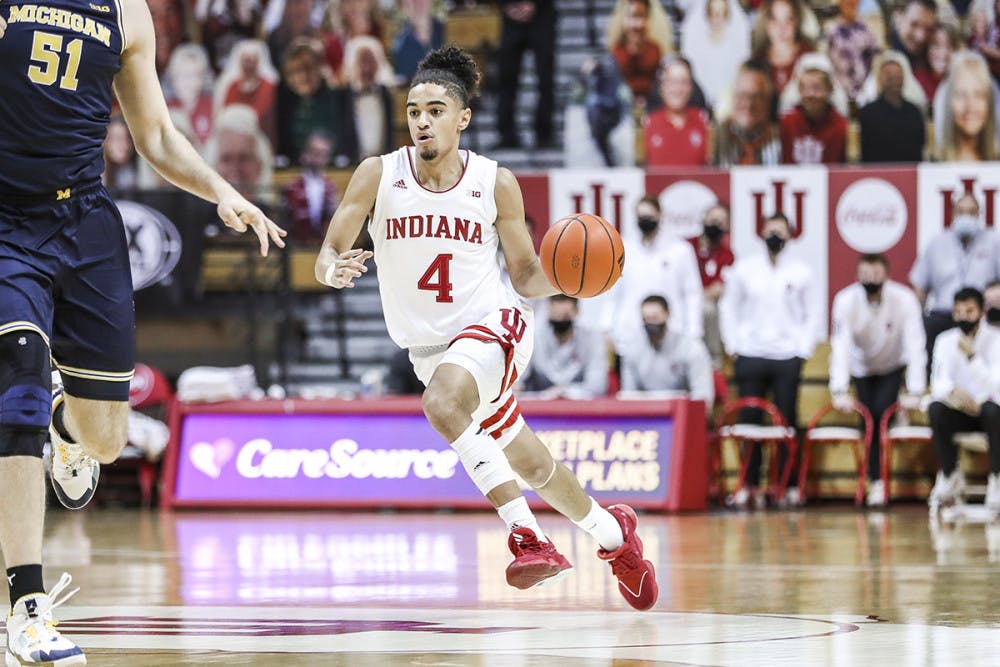
While all of those numbers may bunch together at first glance, some very interesting trends begin to emerge upon closer examination. The most clear pattern that can be observed is that, after gaining muscle and spending time in a college weight training program, the player’s production seems to rise.
Sure, this could be simply related to having more experience in the league, however, this is an especially important note due to the fact that all of these players reclassified. Having one less year to develop in comparison to the general field of college players, it takes time for players who enter college early to allow for their bodies to catch up.
When looking at how production correlates to weight gain, player efficiency rating (PER) rises along with an increase in strength. This may seem like an obvious connection, but it is easy to forget just how important physical attributes are to a player’s ability to compete at a high level.
Without the ability to match up evenly with more physically mature opponents, players do not really have a shot at putting up their best numbers. For players who have gone through the reclassification process, it takes more time to develop physical strength because they are already behind their counterparts who enter college after a full high school career.
In the cases of the players that were examined, overall player efficiency typically increased by a greater amount in players who put on more weight.
Jamal Murray gained 35 pounds from high school to where he is now in the NBA, and his PER has increased by 4.2. In comparison, while Nico Mannion has only put on 10 pounds since high school. It should not be surprising that he is having an incredibly difficult time this far, potentially due to his limited ability to match up with far more physically mature professional players.
Ryan Greer and Wayne Selden Jr. both had weight increases of 20-plus pounds over their three-year college careers and their PERs increased by 10.9 and 5.6, respectively, throughout their college careers.
If there is one crucial point to extract from this argument, it is that Lander both needs and deserves time to develop. At 185 pounds, he has already jumped 25 pounds throughout his first year of college.
Fans have begun to see increased production on the floor from Lander as well. In two recent games against Michigan and Michigan State, Lander put up seven points in each game. Those 14 points are just five below what he had scored for the rest of the 20-game Big Ten slate combined.
Could Lander’s physical development and maturation finally be manifesting itself in better play on the floor? Looking at the development of the other players who reclassified, that certainly seems like it could be the case.
Lander came to IU with lofty expectations, and it is by no means anywhere near time to throw those expectations away. If anything, his progression through this season should be a reason for hope.
Just in the past few Big Ten games, Lander has made moves using his speed, agility, and solid ball-handling to easily find his way to the basket. It is only a matter of time until fans will see this on a nightly basis.
While his PER for this year currently sits at only 2.8, Lander has put in the work necessary to increase that number moving forward. Lander discussed his progress in a recent press conference.
“We are all putting in crazy amounts of work, we’re always in the gym getting extra lifts, extra shots up, skills workouts, everything,” said Lander.
In what should have been his first year, the 2021-22 college basketball season will be the true test of whether or not Lander will be able to live up to those high hopes that came with his commitment. If his physical and mental progression continue on the trajectory that they did throughout this season, fans will have a lot to look forward to.
